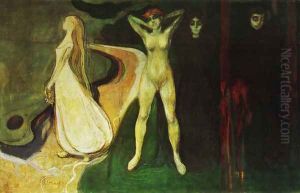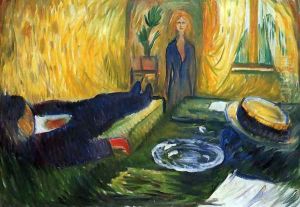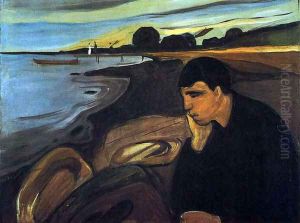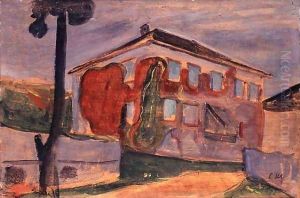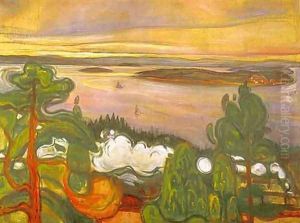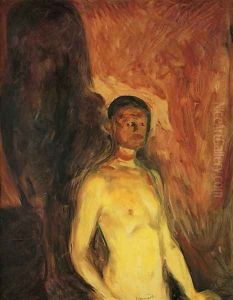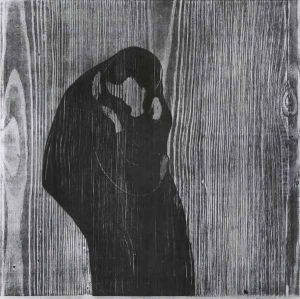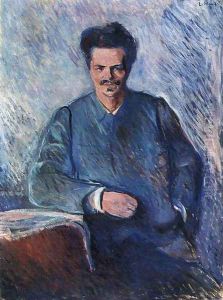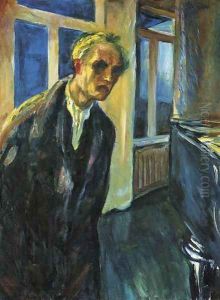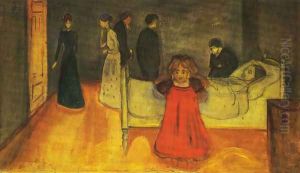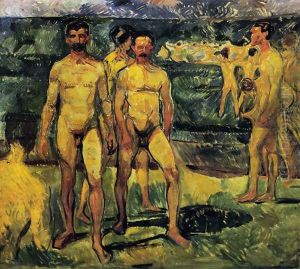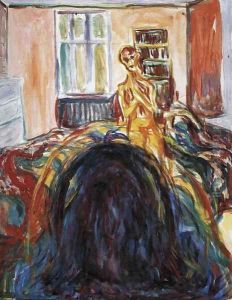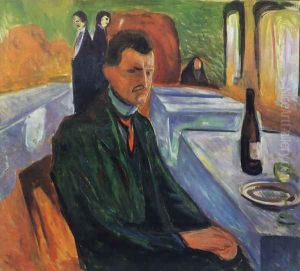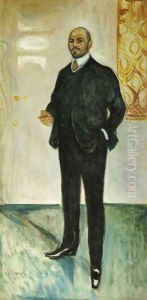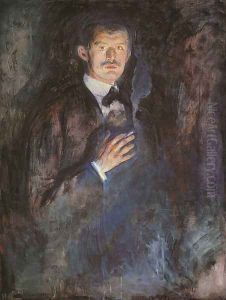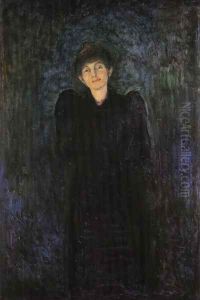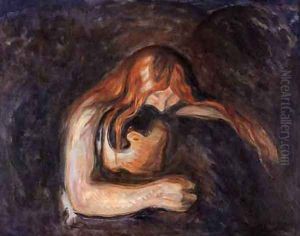Edvard Munch Paintings
Edvard Munch was a Norwegian painter and printmaker, born on December 12, 1863, in Løten, Norway. He was a pioneer in the Expressionist movement in modern painting. Munch was raised in Kristiania (now Oslo), and he was trained as an engineer, but he left his studies to pursue art. He studied at the Royal School of Art and Design of Kristiania and was influenced by the bohemian society of the time.
Munch's early work was often somber and introspective, reflecting the tragedies he faced in his life, including the loss of his mother and sister to illness during his childhood. His style evolved through his exposure to the works of the post-Impressionists during several stays in Paris, and also through his contact with the Symbolist movement. Munch's most famous work, 'The Scream,' created in 1893, encapsulates the existential angst and despair that characterized much of his oeuvre. This iconic artwork has become a symbol of modern anxiety and has been interpreted in numerous ways.
Throughout his career, Munch explored themes of life, love, fear, death, and melancholy. He created a series of paintings known as 'The Frieze of Life,' which delved into these universal human experiences. His work is characterized by the use of strong lines, waves of color, and evocative imagery that aims to portray the internal psychological states of the subjects.
Munch faced a number of personal struggles, including bouts of illness and a nervous breakdown in 1908, after which he briefly sought psychiatric help. However, these experiences also fueled his artistic output and helped him to forge a deeply personal style that would influence later Expressionist artists.
Munch's impact on the art world extended beyond his paintings and prints. He was also an influential teacher and mentor to a younger generation of artists. Despite his personal struggles, he continued to work until his death on January 23, 1944, in Oslo. Munch left behind a vast body of work that continues to resonate with audiences for its emotional depth and raw, psychological intensity. His art is housed in museums around the world, with the largest collection in the Munch Museum in Oslo.

